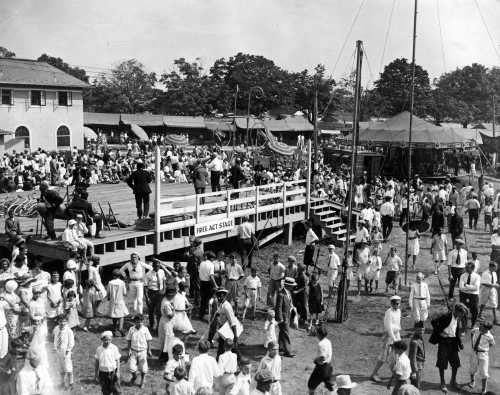A. Aubrey Bodine's Timonium Fair (1929) Photograph Showcases His Pioneering Pictorialist Legacy

Summary
Full Article
The photograph "Timonium Fair (1929)" by A. Aubrey Bodine captures a moment in time with a crowd at the fair, but it is more than just a snapshot; it is a testament to Bodine's mastery of pictorialist photography. Regarded as one of the finest pictorialists of the twentieth century, Bodine's work transcended the conventional boundaries of newspaper photography, elevating it to an art form.
Bodine's career, which began in 1923 with the Baltimore Sunday Sun, was marked by a relentless pursuit of artistic excellence. His documentary photographs, often characterized by their artistic design and lighting, were not merely records of events but were imbued with a sense of mood and proportion that set them apart. His dedication to the craft led him to study art principles at the Maryland Institute College of Art, treating his camera and darkroom equipment with the same reverence as a painter's brush or a sculptor's chisel.
What set Bodine apart was not just his eye for composition but his innovative techniques in the darkroom. He was known for manipulating negatives with dyes, intensifiers, and even pencil markings to achieve the desired effect. This approach, where the picture was 'made' rather than 'taken,' challenged the traditional notions of photography, positioning it as a creative discipline on par with painting and sculpture.
The legacy of A. Aubrey Bodine is preserved through more than 6,000 photographs available for viewing and purchase on www.aaubreybodine.com. These images, spanning his 47-year career, offer a glimpse into the mind of a photographer who saw beyond the lens, crafting images that continue to inspire and captivate. His work not only documents the past but also serves as a bridge between photography and fine art, challenging future generations to explore the creative possibilities of the medium.

This story is based on an article that was registered on the blockchain. The original source content used for this article is located at citybiz
Article Control ID: 134130